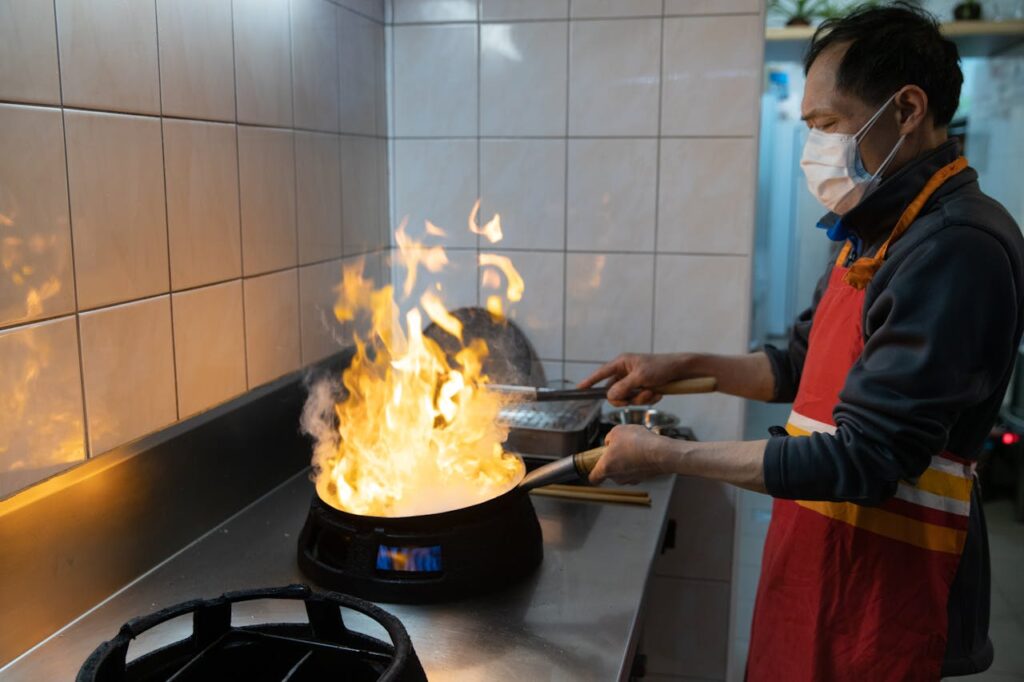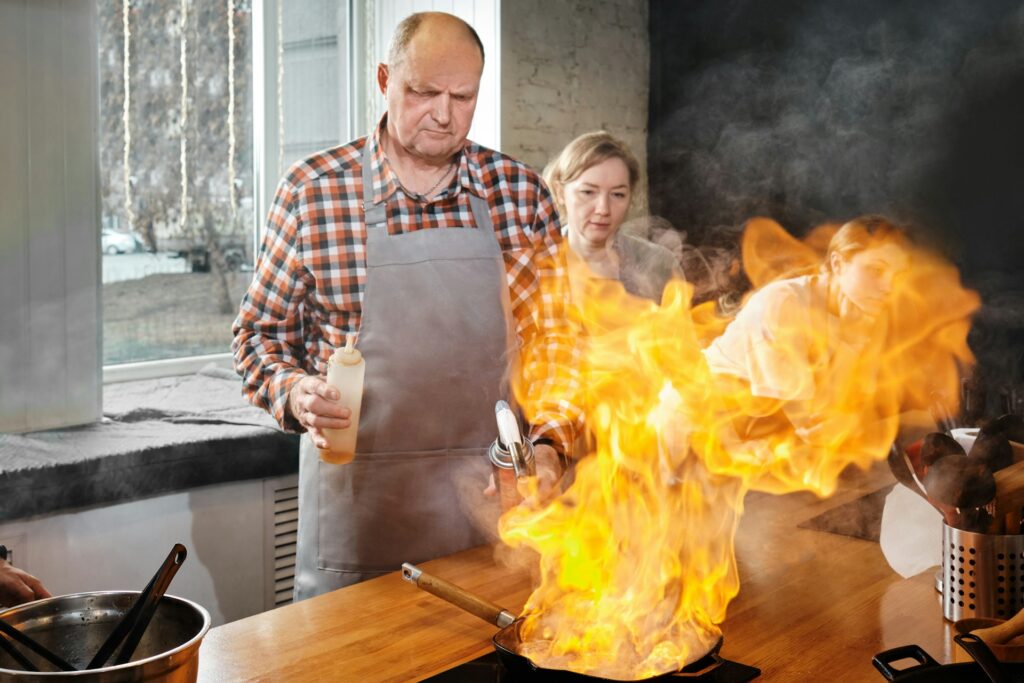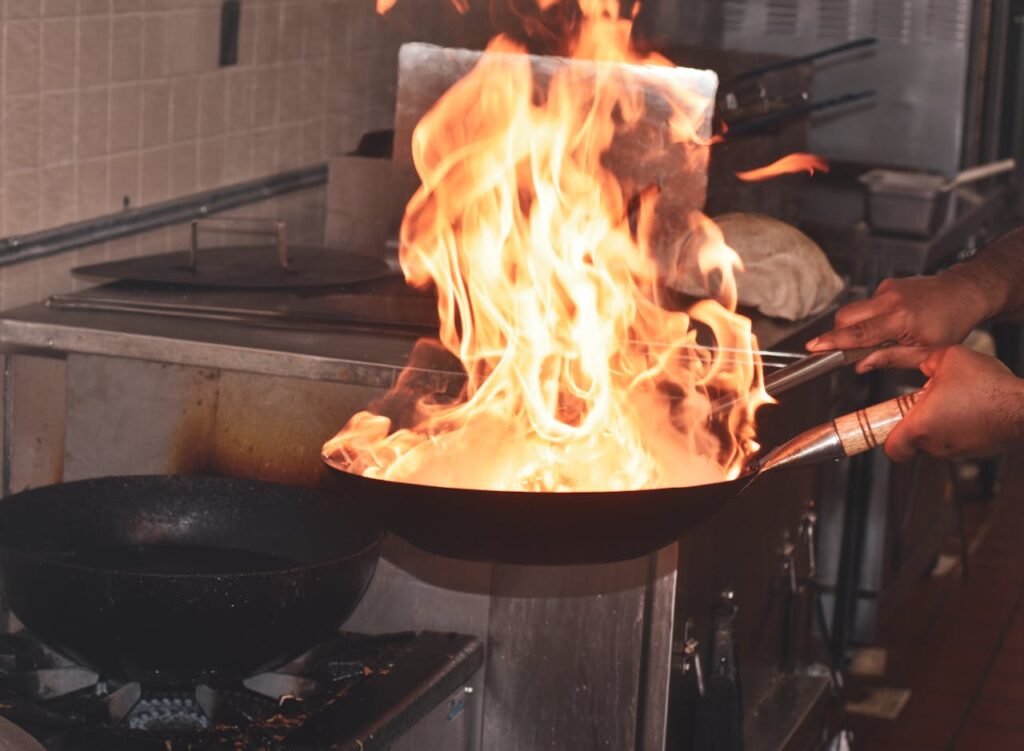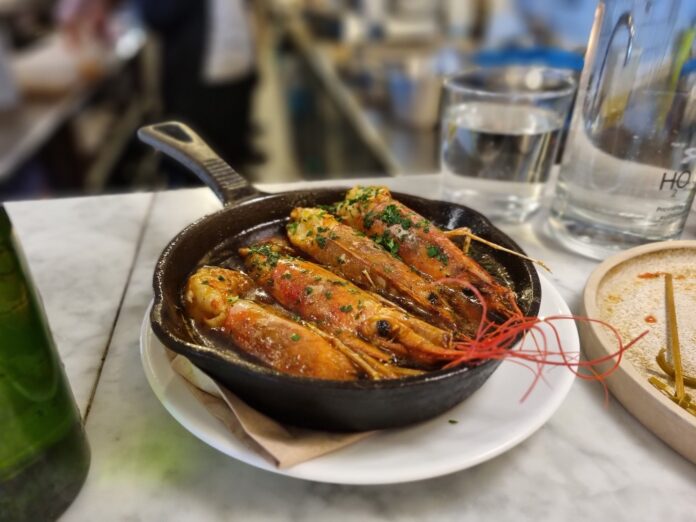For many home cooks turning their hand to the wok for the first, achieving that elusive restaurant-quality stir-fry – where vegetables remain vibrant yet tender, and proteins are perfectly seared – feels like chasing a culinary unicorn.
The secret lies in understanding not just the technique, but the science and philosophy behind proper stir-frying. With that in mind, here’s something of a beginner’s guide, aiming to unlock the mysteries of wok hei, that coveted breath of the wok that elevates a good stir-fry (or even a sludgy, stodgy stir-fry) to a magnificent one.
The Foundation: Your Equipment
Before we even consider proper professional technique, we must address the cornerstone of stir-frying: the wok itself.
Traditional carbon steel woks, measuring 14 inches in diameter, offer the ideal combination of heat retention and responsiveness. Contrary to popular belief, flat-bottomed woks can work brilliantly on Western hobs, though round-bottomed versions paired with a wok ring remain the gold standard for gas cookers.
A properly seasoned wok is non-negotiable. Much like a cast-iron pan, your wok should develop a naturally non-stick patina over time. This isn’t merely about preventing food from sticking – it’s about developing those complex flavours that only come from a well-seasoned vessel.

To properly season a wok:
- Scrub your new wok thoroughly with hot water and washing-up liquid to remove the factory coating. Dry completely.
- Open your windows and turn on your extractor fan—this process creates smoke.
- Heat your wok until it begins to change colour (it may develop yellowish or brownish spots—this is normal).
- Remove from heat and add two tablespoons of high-smoke-point oil (groundnut or rapeseed work well). Using a wadded kitchen roll held with tongs, spread the oil in a thin layer across all surfaces.
- Return to high heat and watch the oil begin to smoke. Keep spreading the oil around as it smokes, paying special attention to the sides of the wok.
- Once the smoking subsides, wipe out any excess oil. The surface should now appear patchy and darker.
- Repeat the oiling and heating process 2-3 more times until your wok develops a dark, semi-glossy finish.
- For the final step, stir-fry aromatic vegetables like spring onions and ginger scraps in oil. This adds flavour to the patina and tests your seasoning.
The Secret Of Silky Protein: Velveting
Professional Chinese kitchens rarely add raw meat directly to the wok. Instead, they employ a crucial technique called velveting – a process that transforms ordinary cuts into supremely tender, silky morsels. This method involves marinating protein (be it chicken, beef, pork, or seafood) in a mixture of egg white, cornflour, rice wine, and a touch of baking soda.
The science behind velveting is fascinating: the egg white creates a protective coating, while the alkaline baking soda changes the protein’s pH level, preventing it from tightening too much during cooking. The result? Meat that remains tender and juicy even when subjected to intense wok heat.
Traditional velveting involves briefly blanching the marinated meat in oil or water before stir-frying. While oil-blanching produces superior results, water-blanching is more practical for home kitchens and still yields excellent outcomes. Either way, this extra step makes the difference between good and restaurant-quality stir-fries.
Read: Professional kitchen secrets revealed
The Heat Factor: Understanding Temperature Control
Professional-level stir-frying demands fierce heat—the kind that makes your oil shimmer and creates that distinctive ‘wok aroma’ before you’ve even added any ingredients. Most domestic hobs struggle to match the 100,000 BTU output of commercial, jet engine-style wok burners, but we can compensate through technique.
Pre-heat your wok until it’s smoking slightly. When a drop of water instantly vaporises with a sizzle, you’re ready to begin. This extreme heat serves multiple purposes: it prevents ingredients from stewing, ensures proper caramelisation, and most importantly, creates the conditions necessary for wok hei.

Mise En Place
Perhaps the most crucial yet overlooked aspect of successful stir-frying is thorough preparation. Everything must be cut uniformly, dried thoroughly, and arranged within arm’s reach. Professional chefs aren’t being precious when they insist on mise en place — they understand that once the wok hits the heat, there’s no time to hunt for ingredients or finish chopping that last carrot.
A Flick Of The Wrist
Now we arrive at the actual technique. Professional stir-frying is a choreographed dance of movement and timing. Begin by heating your oil until it’s just smoking, then add aromatics – ginger, garlic, spring onions—but keep them moving constantly to prevent burning. The wok should never sit still; maintain a constant rocking motion while using your wok spatula (wok hei) to toss and turn ingredients.
For proteins, the ‘sear and slide’ technique is essential. Spread your meat in a single layer, allow it to sear for 30 seconds without touching it, then use your spatula to fold and flip in one fluid motion. The meat should slide up the sides of the wok while you toss, maximising surface contact and ensuring even cooking.

Understanding Wok Hei
Wok hei, often translated as ‘the breath of the wok’, is that magical combination of caramelisation, smokiness, and umami that defines truly exceptional stir-frying. It occurs when oils vaporise and foods briefly catch the flame’s essence, creating complex flavour compounds through the Maillard reaction.
To achieve wok hei at home, master the technique of ‘tossing the wok’ – literally lifting and flipping ingredients to catch the rising heat. This isn’t just for show; it exposes food to the intense heat zone just above the wok’s surface, where temperatures can exceed 200°C.
Layering Flavours Like A Professional
Professional stir-frying isn’t just about technique—it’s about understanding how flavours build and combine. Start with aromatic ingredients that infuse the oil, then add proteins, followed by harder vegetables, and finally more delicate ingredients. Each addition should be intentional, with spaces between to allow the wok to recover its heat.
Sauces should be added last and in moderation. The goal is to coat ingredients lightly, not create a soup. Many home cooks err on the side of too much sauce, which can turn a crisp stir-fry into a soggy mess. Remember: the sauce should enhance, not dominate. This is about celebrating the essence of the main ingredients, after all, in all their vitality.

Common Pitfalls & Professional Solutions
The most frequent mistake in home stir-frying is overcrowding the wok. Professional chefs understand that each ingredient needs space to cook properly. If necessary, cook in batches and combine at the end. Yes, it takes longer, but the results are worth it.
Another professional secret is temperature recovery time. After adding ingredients, wait for the wok to regain its heat before the next addition. You’ll know you’re ready when you hear that distinctive sizzle return.
Read: Chef’s secrets to keeping our home kitchens sparkling clean
Bringing It All Together
Mastering professional-level stir-frying isn’t about following recipes—it’s about understanding principles and developing intuition. Listen to your wok; it will tell you when it’s hot enough, when to add ingredients, and when to make adjustments. The signature sound of a proper stir-fry—that loud, consistent sizzle—should become your kitchen’s soundtrack.
Remember that every professional chef started somewhere. Practice these techniques with simple dishes before attempting more complex combinations. Focus on mastering heat control, timing, and movement. With patience and practice, that elusive restaurant-quality stir-fry will become part of your regular repertoire, complete with the coveted breath of the wok.





